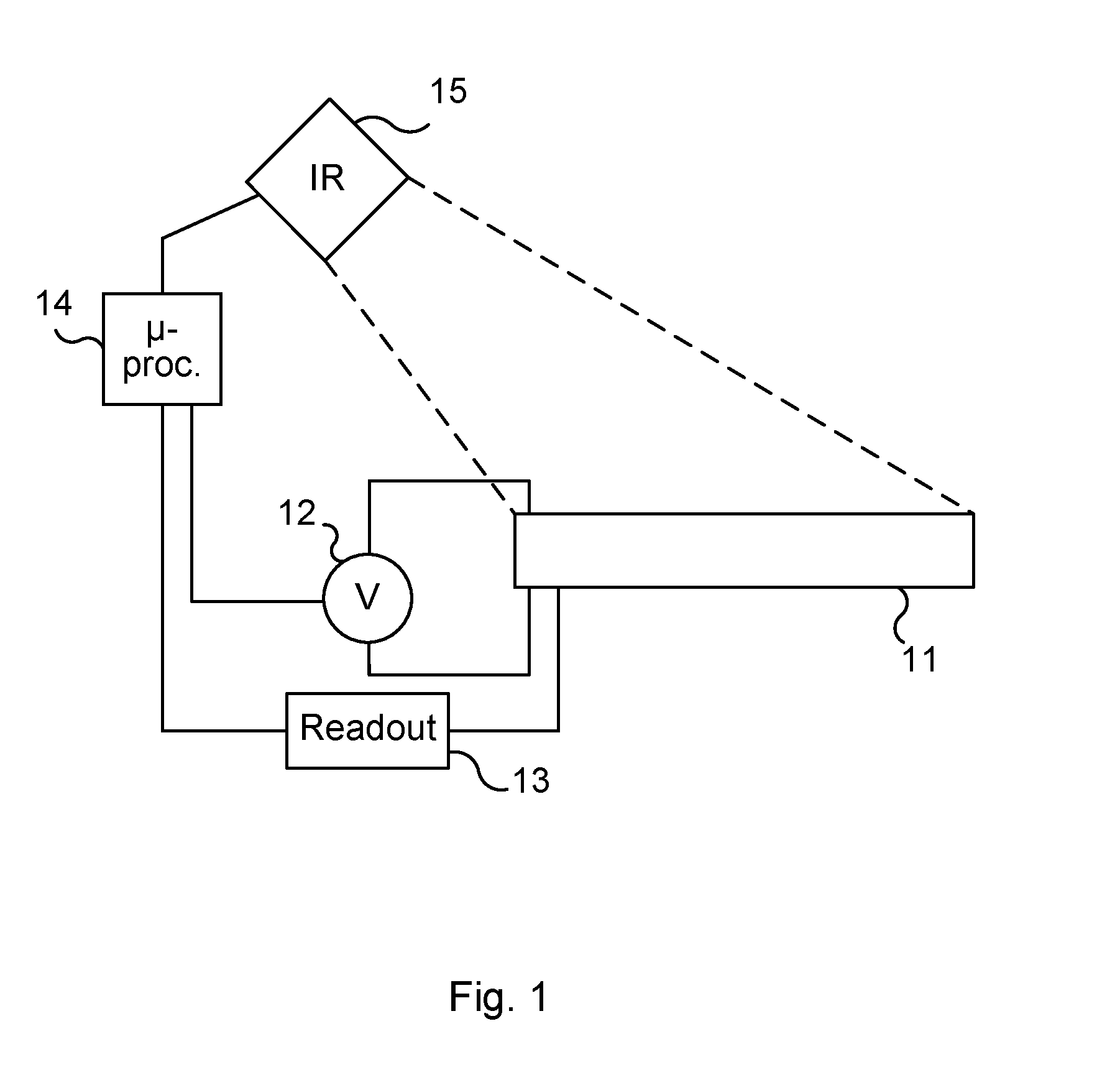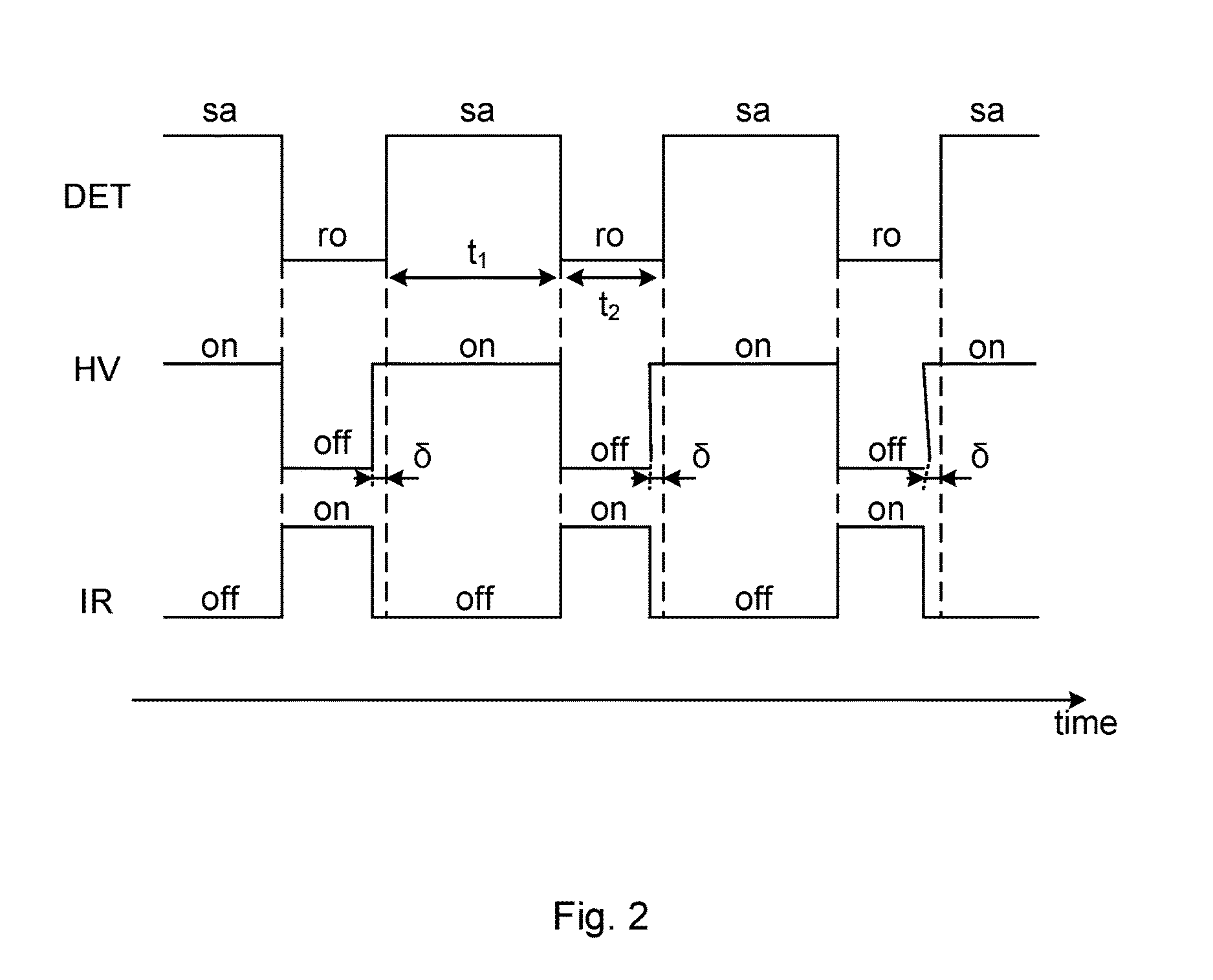Radiation detector and method for reducing the amount of trapped charge carriers in a radiation detector
a radiation detector and charge carrier technology, applied in radiation intensity measurement, radiation measurement, instruments, etc., can solve the problems of reducing the sensitivity of the detector, restricting the range of external optical energy sources usable, and reducing the residual net free carrier concentration, so as to reduce the amount of charge carriers and improve the signal-to-noise ratio , the effect of efficient recombination
- Summary
- Abstract
- Description
- Claims
- Application Information
AI Technical Summary
Benefits of technology
Problems solved by technology
Method used
Image
Examples
Embodiment Construction
[0050]FIG. 1 illustrates, schematically, a semiconductor based X ray or gamma ray radiation detector according to one embodiment. The radiation detector comprises a substrate 11 of semiconductor material, a detector bias voltage supply 12 for applying a detector bias voltage over the substrate, a readout arrangement 13 for reading out data indicative of charges freed in, and transported through, the substrate 11, and a control device 14 operatively connected to the detector bias voltage supply 12 and the readout arrangement 13 for controlling the same. The radiation detector may be a Cd—Te or Cd—Zn—Te based radiation detector.
[0051]Examples of detector layouts and substrate materials are further disclosed in U.S. Pat. No. 5,379,336; U.S. Pat. No. 6,933,505; U.S. Pat. No. 7,170,062; U.S. Pat. No. 7,189,971; U.S. Pat. No. 7,361,881; US 2006 / 011853; US2006 / 071174; and US2008 / 019477, the contents of which being hereby incorporated by reference.
[0052]The radiation detector further compri...
PUM
 Login to View More
Login to View More Abstract
Description
Claims
Application Information
 Login to View More
Login to View More - R&D
- Intellectual Property
- Life Sciences
- Materials
- Tech Scout
- Unparalleled Data Quality
- Higher Quality Content
- 60% Fewer Hallucinations
Browse by: Latest US Patents, China's latest patents, Technical Efficacy Thesaurus, Application Domain, Technology Topic, Popular Technical Reports.
© 2025 PatSnap. All rights reserved.Legal|Privacy policy|Modern Slavery Act Transparency Statement|Sitemap|About US| Contact US: help@patsnap.com



